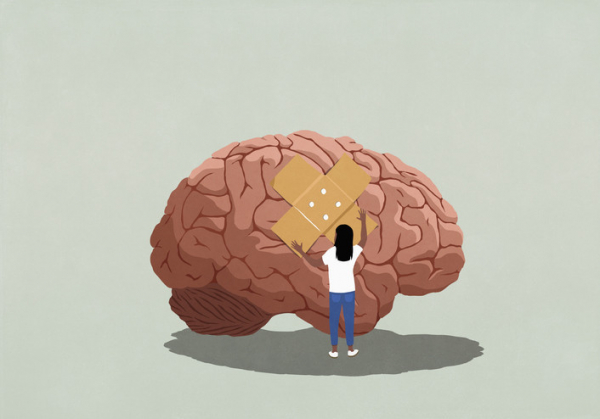
Concussion in children: What to know and do

Concussion is one of the most common injuries to the brain, affecting about two million children and teens every year. It is a particular kind of injury that happens when a blow to the head or somewhere else on the body makes the brain move back and forth within the skull.
It’s possible to get a concussion after what might seem like a minor injury, like a forceful push from behind, or a collision between two players in a football or soccer game.
What are the signs and symptoms of concussion?
Because the injury may not seem that significant from the outside, it’s important to know the symptoms of a concussion. There are many different possible symptoms, including
- passing out (this could be a sign of a more serious brain injury)
- headache
- dizziness
- changes in vision
- feeling bothered by light or noise
- confusion or feeling disoriented
- memory problems (such as difficulty remembering details of the injury) or difficulty concentrating
- balance or coordination problems
- mood changes.
Some of these are visible to others and some are felt by the person with the concussion. That’s why it’s important to know the signs and to ask all the right questions of a child who has had an injury.
Sometimes the symptoms might not be apparent right away, but show up in the days following the injury. The CDC’s Heads Up website has lots of great information about how to recognize a concussion.
How can further harm to the brain be avoided?
The main reason it’s important to recognize a possible concussion early is that the worst thing you can do after getting a concussion is get another one. The brain is vulnerable after a concussion; if it is injured again, the symptoms can be longer lasting — or even permanent, as in cases of chronic traumatic encephalopathy (CTE), a condition that has been seen in football players and others who have repeated head injuries.
If there is a chance that a child has had a concussion during a sports competition, they must stop playing — and get medical attention. It’s important to get medical attention any time there is concern about a possible concussion, both to be sure there isn’t a more serious brain injury, and to do a good assessment of the symptoms, so that they can be monitored over time. There are some screening questionnaires that are used by doctors that can be used again in the days and weeks after the concussion to see how the child is improving.
What helps children recover after a concussion?
Experts have struggled with figuring out how to protect the brain after a concussion. For a long time, the recommendation was to rest and do very little at all. This meant not doing any exercise, not going to school, not even reading or watching television. As symptoms improved, the restrictions were lifted gradually.
Over time, though, research showed that not only was this much rest not necessary, it was counterproductive. It turns out that getting kids back into their daily lives, and back into being active, is safe and leads to quicker recovery. Experts still recommend rest and then moving gradually back into activities, but the guidelines are no longer as strict as they once were.
One important note: A medical professional should guide decisions to move from rest to light activity, and then gradually from there to moderate and then regular activities based on how the child is doing. This step-by-step process may extend for days, weeks, or longer, depending on what the child needs. Parents, coaches, and schools can help support a child or teen as they return to school and return to activities and sports.
Some children will be able to get back into regular activities quickly. But for others it can take weeks or even months. Schools and sports trainers should work with children to support them in their recovery. Some children develop post-concussive syndromes with headache, fatigue, and other symptoms. This is rare but can be very disabling.
How can parents help prevent concussions?
It's not always possible to prevent concussions, but there are things that parents can do:
- Be sure that children use seat belts and other appropriate restraints in the car.
- Have clear safety rules and supervise children when they are playing, especially if they are riding bikes or climbing in trees or on play structures.
- Since at least half of concussions happen during sports, it’s important that teams and coaches follow safety rules. Coaches should teach techniques and skills to avoid dangerous collisions and other injuries. Talk to your child’s coaches about what they are doing to keep players safe. While helmets can prevent many head injuries, they don’t prevent concussions.
About the Author

Claire McCarthy, MD, Senior Faculty Editor, Harvard Health Publishing
Claire McCarthy, MD, is a primary care pediatrician at Boston Children’s Hospital, and an assistant professor of pediatrics at Harvard Medical School. In addition to being a senior faculty editor for Harvard Health Publishing, Dr. McCarthy … See Full Bio View all posts by Claire McCarthy, MD

Which skin creams are most effective for eczema?

Quelling the discomfort of atopic dermatitis, the most common form of eczema, can be a daily quest. This inflamed, itchy skin condition can interfere with sleeping, socializing, and many other activities.
If home remedies such as gentle cleansing and regular moisturizing don’t provide relief, your doctor might recommend a prescription treatment to apply to your skin. Which prescription cream is most effective? A new study boils it down to a few overall winners.
What is atopic dermatitis and the itch-scratch cycle?
Atopic dermatitis is a chronic inflammatory skin disease. The areas commonly affected include the face, hands, feet, or the skin folds of the elbows or behind the knees.
We don’t know exactly what causes atopic dermatitis. Genes, the environment, and an overactive immune system all seem to play a role in creating inflammation, which feels itchy. Scratching the itch creates more irritation and inflammation, which causes more itching.
As the itch-scratch cycle continues, the rash gets worse. The skin might tear, ooze, and crust over, which can be painful.
Which skin treatments were more effective in the study?
Some prescription topical skin treatments for atopic dermatitis are more effective than others, according to a 2023 study published online by The Journal of Allergy and Clinical Immunology.
Scientists evaluated more than 200 randomized trials involving more than 43,000 people with atopic dermatitis (average age 18). The researchers compared almost 70 different prescription creams or ointments, which are broadly called topical treatments and are designed to be applied to affected areas of skin.
These treatments fall into five categories. If you have eczema, their generic names may or may not be familiar to you, but your medical team is likely to know them well:
- topical corticosteroids, divided into seven classes ranging from the most to the least potent, decrease the release of an inflammatory chemical called phospholipase A2
- topical Janus kinase (JAK) inhibitors interrupt inflammatory signals as they enter cells
- topical PDE4 inhibitors raise the production of a chemical called phosphodiesterase-4, or PDE4, and lower the body’s inflammatory response
- topical calcineurin inhibitors help suppress the production of chemical messengers that tell the body to ramp up its defenses
- other topical treatments, including antibiotics and prescription moisturizers.
Researchers looked at which medications had outcomes important to patients, including which
- were best at improving quality of life
- were best at reducing eczema-related severity, itch, sleep disturbances, or flare-ups
- caused the fewest serious side effects
- were discontinued least often due to serious side effects.
Which atopic dermatitis medications proved to be most effective?
The study yielded some predictable results and a surprise. The overall winners were
- two calcineurin inhibitors: pimecrolimus (Elidel) and tacrolimus (Protopic)
- moderate-potency topical corticosteroids, a large group that includes fluocinolone acetonide (Synalar cream 0.025%) and triamcinolone acetonide (Kenalog cream/ointment 0.1%).
What did these medications improve?
- Pimecrolimus improved six of seven outcomes, and was among the best at reducing sleep disturbances and eczema flares.
- High-dose tacrolimus (0.1%) improved five outcomes, and was among the best at reducing itch and eczema flares.
- Moderate-potency steroids improved four to six of the seven outcomes, and were best at reducing eczema itch, flares, and serious side effects.
“That’s in line with what we often prescribe,” says Dr. Connie Shi, a dermatologist who often treats people with eczema at Harvard-affiliated Brigham and Women’s Hospital. “The strongest topical steroids appeared to be the most effective at reducing eczema severity in the study. However, for longer-term maintenance we may consider switching to a moderate-potency steroid, or one of the nonsteroid options, to minimize the risk of thinning the skin, which can occur with long-term use of topical steroids.”
The surprise finding: the study found little to no effectiveness from using a topical cream twice daily versus just once daily. “The traditional advice is twice daily,” Dr. Shi says. “Once a day would make it more convenient to use, and it may help people stay on their medication regimen without decreasing effectiveness.”
Which treatments were less effective in this study? The researchers found that topical antibiotics were among the least effective treatments for eczema.
Should you change your treatment?
“While the study included more than 40,000 people, what worked for participants may not always work for you, as different people may respond differently to the same treatment,” Dr. Shi explains. “There are many factors to consider when prescribing a treatment, including your age, the areas on your skin that are affected, the severity of the eczema, and potential side effects.”
The bottom line? “If a treatment regimen is working for you, then continue it, as long as you don’t have any serious side effects,” she says. “If your current regimen isn’t working well, talk with your doctor or a dermatologist to see if there’s another prescription cream or ointment that you may want to try.”
About the Author

Heidi Godman, Executive Editor, Harvard Health Letter
Heidi Godman is the executive editor of the Harvard Health Letter. Before coming to the Health Letter, she was an award-winning television news anchor and medical reporter for 25 years. Heidi was named a journalism fellow … See Full Bio View all posts by Heidi Godman
About the Reviewer
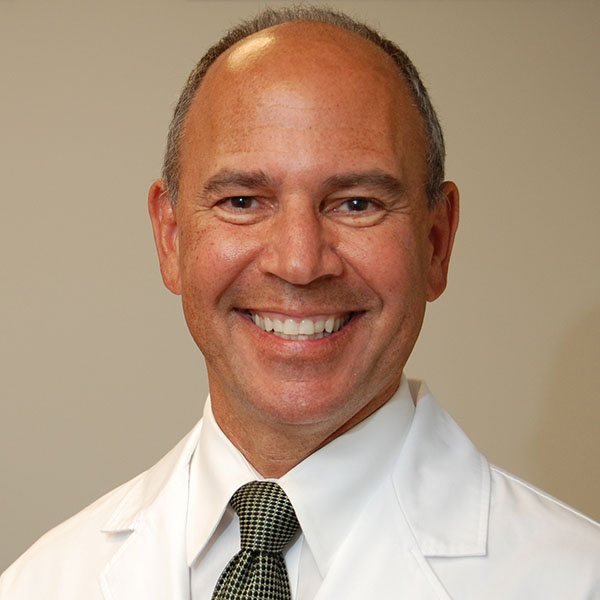
Howard E. LeWine, MD, Chief Medical Editor, Harvard Health Publishing; Editorial Advisory Board Member, Harvard Health Publishing
Dr. Howard LeWine is a practicing internist at Brigham and Women’s Hospital in Boston, Chief Medical Editor at Harvard Health Publishing, and editor in chief of Harvard Men’s Health Watch. See Full Bio View all posts by Howard E. LeWine, MD

How well do you worry about your health?

Don’t worry. It’s good advice if you can take it. Of course that’s not always easy, especially for health concerns.
The truth is: it’s impossible (and ill-advised) to never worry about your health. But are you worrying about the right things? Let’s compare a sampling of common worries to the most common conditions that actually shorten lives. Then we can think about preventing the biggest health threats.
Dangerous but rare health threats
The comedian John Mulaney says the cartoons he watched as a child gave him the impression that quicksand, anvils falling from the sky, and lit sticks of dynamite represented major health risks. For him (as is true for most of us), none of these turned out to be worth worrying about.
While harm can befall us in many ways, some of our worries are not very likely to occur:
- Harm by lightning: In the US, lightning strikes kill about 25 people each year. Annually, the risk for the average person less than one in a million. There are also several hundred injuries due to nonfatal lightning strikes. Even though lightning strikes the earth millions of times each year, the chances you’ll be struck are quite low.
- Dying in a plane crash: The yearly risk of being killed in a plane crash for the average American is about one in 11 million. Of course, the risk is even lower if you never fly, and higher if you regularly fly on small planes in bad weather with inexperienced pilots. By comparison, the average yearly risk of dying in a car accident is approximately 1 in 5,000.
- Snakebite injuries and deaths: According to the Centers for Disease Control and Prevention, an estimated 7,000 to 8,000 people are bit by poisonous snakes each year in the US. Lasting injuries are uncommon, and deaths are quite rare (about five per year). In parts of the country where no poisonous snakes live, the risk is essentially zero.
- Shark attacks: As long as people aren’t initiating contact with sharks, attacks are fairly uncommon. Worldwide, about 70 unprovoked shark attacks occur in an average year, six of which are fatal. In 2022, 41 attacks occurred in the US, two of which were fatal.
- Public toilet seats: They may appear unclean (or even filthy), but they pose little or no health risk to the average person. While it’s reasonable to clean off the seat and line it with paper before touching down, health fears should not discourage you from using a public toilet.
I’m not suggesting that these pose no danger, especially if you’re in situations of increased risk. If you’re on a beach where sharks have been sighted and seals are nearby, it’s best not to swim there. When in doubt, it’s a good idea to apply common sense and err on the side of safety.
What do Google and TikTok tell us about health concerns?
Analyzing online search topics can tell us a lot about our health worries.
The top Google health searches in 2023 were:
- How long is strep throat contagious?
- How contagious is strep throat?
- How to lower cholesterol?
- What helps with bloating?
- What causes low blood pressure?
Really? Cancer, heart disease and stroke, or COVID didn’t reach the top five? High blood pressure didn’t make the list, but low blood pressure did?
Meanwhile, on TikTok the most common topics searched were exercise, diet, and sexual health, according to one study. Again, no top-of-the-list searches on the most common and deadly diseases.
How do our worries compare with the top causes of death?
In the US, these five conditions took the greatest number of lives in 2022:
- heart disease
- cancer
- unintentional injury (including motor vehicle accidents, drug overdoses, and falls)
- COVID-19
- stroke.
This list varies by age. For example, guns are the leading cause of death among children and teenagers (ages 1 to 19). For older teens (ages 15 to 19), the top three causes of death were accidents, homicide, and suicide.
Perhaps the lack of overlap between leading causes of death and most common online health-related searches isn’t surprising. Younger folks drive more searches and may not have heart disease, cancer, or stroke at top of mind. In addition, online searches might reflect day-to-day concerns (how soon can my child return to school after having strep throat?) rather than long-term conditions, such as heart disease or cancer. And death may not be the most immediate health outcome of interest.
But the disconnect suggests to me that we may be worrying about the wrong things — and focusing too little on the biggest health threats.
Transforming worry into action
Most of us can safely worry less about catching something from a toilet seat or shark attacks. Instead, take steps to reduce the risks you face from our biggest health threats. Chipping away at these five goals could help you live longer and better while easing unnecessary worry:
- Choose a heart-healthy diet.
- Get routinely recommended health care, including blood pressure checks and cancer screens, such as screening for colorectal cancer.
- Drive more safely. Obey the speed limit, drive defensively, always wear a seatbelt, and don’t drive if you’ve been drinking.
- Don’t smoke. If you need to quit, find help.
- Get regular exercise.
The bottom line
Try not to focus too much on health risks that are unlikely to affect you. Instead, think about common causes of poor health. Then take measures to reduce your risk. Moving more and adding healthy foods to your meals is a great start.
And in case you’re curious, the average number of annual deaths due to quicksand is zero in the US. Still a bit worried? Fine, here’s a video that shows you how to save yourself from quicksand even though you’ll almost certainly never need it.
About the Author

Robert H. Shmerling, MD, Senior Faculty Editor, Harvard Health Publishing; Editorial Advisory Board Member, Harvard Health Publishing
Dr. Robert H. Shmerling is the former clinical chief of the division of rheumatology at Beth Israel Deaconess Medical Center (BIDMC), and is a current member of the corresponding faculty in medicine at Harvard Medical School. … See Full Bio View all posts by Robert H. Shmerling, MD

Ever worry about your gambling?

Are online gambling and sports betting new to your area? Are gambling advertisements catching your eye? Have you noticed sports and news shows covering the spread? Recent changes in laws have made gambling widely accessible, and its popularity has soared.
Occasional bets are rarely an issue. But uncontrolled gambling can lead to financial, psychological, physical, and social consequences, some of which are extreme. Understanding whether gambling is becoming a problem in your life can help you head off the worst of these issues and refocus on having more meaning, happiness, and psychological richness in your life. Gambling screening is a good first step.
Can you screen yourself for problem gambling?
Yes. Screening yourself is easy. The Brief Biosocial Gambling Screen (note: automatic download) is a validated way to screen for gambling disorder. It has three yes-or-no questions. Ask yourself:
- During the past 12 months, have you become restless, irritable, or anxious when trying to stop/cut down on gambling?
- During the past 12 months, have you tried to keep your family or friends from knowing how much you gambled?
- During the past 12 months, did you have such financial trouble as a result of your gambling that you had to get help with living expenses from family, friends, or welfare?
What do your answers mean?
Answering yes to any one of these questions suggests that you are at higher risk for experiencing gambling disorder. Put simply, this is an addiction to gambling. Like other expressions of addiction, for gambling this includes loss of control, craving, and continuing despite bad consequences. Unique to gambling, it also often means chasing your losses.
A yes doesn’t mean that you are definitely experiencing a problem with gambling. But it might be valuable for you to seek a more in-depth assessment of your gambling behavior. To find an organization or person qualified to help, ask a health care provider, your local department of public health, or an advocacy group like the National Council on Problem Gambling.
Are you ready for change?
Your readiness to change a behavior matters when deciding the best first steps for making a change. If someone asks you whether you want to change your gambling, what would you say?
|
I never think about my gambling. |
Sometimes I think about gambling less. |
I have decided to gamble less. |
I am already trying to cut back on my gambling. |
I changed my gambling: I now do not gamble, or gamble less than before. |
Depending on your answer, you might seek out different solutions. What’s most important initially is choosing a solution that feels like the right fit for you.
What if you don’t feel ready to change? If you haven’t thought about your gambling or only occasionally think about changing your gambling, you might explore lower intensity actions. For example, you could
- read more about how gambling could create a problem for you
- listen to stories of those who have lived experience with gambling disorder.
If you are committed to making a change or are already trying to change, you might seek out more engaging resources and strategies to support those decisions, like attending self-help groups or participating in treatment.
Read on for more details on choices you might make.
What options for change are available if you want to continue gambling?
If you want to keep gambling in some way, you might want to stick to lower-risk gambling guidelines:
- gamble no more than 1% of household income
- gamble no more than four days per month
- avoid regularly gambling at more than two types of games, such as playing the lottery and betting on sports.
Other ways to reduce your risk of gambling harm include:
- Plan ahead and set your own personal limits.
- Keep your entertainment budget in mind if you decide to gamble.
- Consider leaving credit cards and debit cards at home and use cash instead.
- Schedule other activities directly after your gambling to create a time limit.
- Limit your use of alcohol and other drugs if you decide to gamble.
What are easy first steps toward reducing or stopping gambling?
If you’re just starting to think about change, consider learning more about gambling, problem gambling, and ways to change from
- blogs, like The BASIS
- books like Change Your Gambling, Change Your Life
- podcasts like After Gambling, All-In, and Fall In, which offer expert interviews, personal recovery stories, and more.
Some YouTube clips demystify gambling, such as how slot machines work, the limits of skill and knowledge in gambling, and how gambling can become an addiction. These sources might help you think about your own gambling in new ways, potentially identifying behaviors that you need to change.
What are some slightly more active steps toward change?
If you’re looking for a slightly more active approach, you can consider engaging in traditional self-help experiences such as helplines and chatlines or Gamblers Anonymous.
Another option is self-help workbooks. Your First Step to Change is a popular workbook that provides information about problem gambling, self-screening exercises for gambling and related conditions like anxiety and depression, and change exercises to get started. A clinical trial of this resource suggested that users were more likely than others to report having recently abstained from gambling.
Watch out for gambling misinformation
As you investigate options, keep in mind that the quality of information available can vary and may even include misinformation. Misinformation is incorrect or misleading information. Research suggests that some common types of gambling misinformation might reinforce harmful beliefs or risky behaviors.
For example, some gambling books, websites, and other resources exaggerate your likelihood of winning, highlight win and loss streaks as important (especially for chance-based games like slots), and suggest ways to change your luck to gain an edge. These misleading ideas can help you to believe you’re more likely to win than you actually are, and set you up for failure.
The bottom line
Taking a simple self-screening test can start you on a journey toward better gambling-related health. Keep in mind that change can take time and won’t necessarily be a straight path.
If you take a step toward change and then a step back, nothing is stopping you from taking a step forward again. Talking with a care provider and getting a comprehensive assessment can help you understand whether formal treatment for gambling is a promising option for you.
About the Author

Debi LaPlante, PhD, Contributor
Dr. Debi LaPlante is director of the division on addiction at the Cambridge Health Alliance, and an associate professor of psychiatry at Harvard Medical School. She joined the division in 2001 and is involved with its … See Full Bio View all posts by Debi LaPlante, PhD
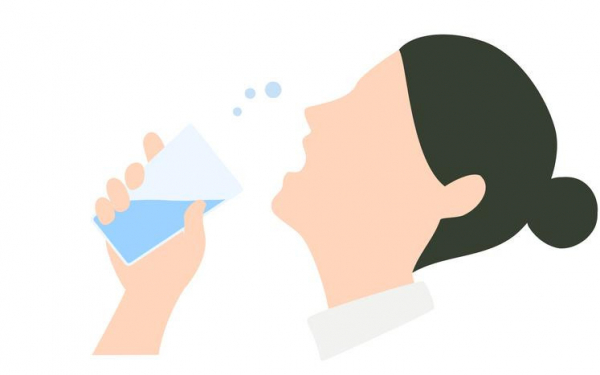
Ever hear of tonsil stones?

Recently, a friend asked me about tonsil stones. He has sore throats several times a year, which are instantly relieved by gargling to remove them. When I told him I thought tonsil stones were pretty rare, he asked: “Are you sure about that? My ear, nose, and throat doctor says they’re common as rocks.” (Get it? stones? rocks?)
It turns out, my friend and his doctor are on to something. Tonsil stones are surprisingly common and often quite annoying. Here’s what to know and do.
What are tonsil stones?
Tonsil stones (medical term: tonsilloliths) are small white or yellow deposits on the tonsils. They develop when bacteria, saliva, food particles, and debris from cells lining the mouth get trapped in tiny indentations called crypts.
They vary considerably between people, including:
- Size. They may be so small that you can’t see them with the naked eye. Or they may grow to the size of gravel or, rarely, much larger.
- Consistency. They’re often soft but may calcify, becoming hard as a rock. Hence, the name.
- How long they last. Tonsil stones can last days to weeks, or may persist far longer before they break up and fall out.
- How often they occur. New tonsilloliths may appear several times each month or just once or twice a year.
While they’re more likely to form if you have poor oral hygiene, good oral hygiene doesn’t provide complete protection. Even those who brush, floss, and see their dentists regularly can develop tonsil stones.
How common are tonsil stones?
You’ve heard of kidney stones and gallstones, right? Clearly, those conditions are better known than tonsil stones. Yet tonsil stones are far more common: studies suggest that up to 40% of the population have them. Fortunately, unlike kidney stones and gallstones, tonsil stones are usually harmless.
What are the symptoms of tonsil stones?
Often people have no symptoms. In fact, if tonsil stones are small enough, you may not even know you have them. When tonsil stones do cause symptoms, the most common ones are:
- sore throat, or an irritation that feels as though something is stuck in the throat
- bad breath
- cough
- discomfort with swallowing
- throat infections.
Who gets tonsil stones?
Anyone who has tonsils can get them. However, some people are more likely than others to form tonsil stones, including those who
- have tonsils with lots of indentations and irregular surfaces rather than a smooth surface
- smoke
- drink lots of sugary beverages
- have poor oral hygiene
- have a family history of tonsil stones.
How are tonsil stones treated?
That depends on whether you have symptoms and how severe the symptoms are.
- If you have no symptoms, tonsil stones may require no treatment.
- If you do have symptoms, gargling with salt water or removing tonsil stones with a cotton swab or a water flosser usually helps. Avoid trying to remove them with sharp, firm objects like a toothpick or a pen, as that can damage your throat or tonsils.
- If your tonsils are inflamed, swollen, or infected, your doctor may prescribe antibiotics or anti-inflammatory medications.
Is surgery ever necessary?
Occasionally, surgery may be warranted. It’s generally reserved for people with severe symptoms or frequent infections who don’t improve with the measures mentioned above.
Surgical options are:
- tonsillectomy, which is removing the tonsils
- cryptolysis, which uses laser, electrical current, or radio waves to smooth the deep indentations in tonsils that allow stones to form.
Can tonsil stones be prevented?
Yes, there are ways to reduce the risk that tonsil stones will recur. Experts recommend the following:
- Brush your teeth and tongue regularly (at least twice a day: in the morning and before sleep).
- Floss regularly.
- Gargle with salt water after eating.
- Eliminate foods and drinks that contain a lot of sugar, which feeds bacteria that can help stones form.
- Don’t smoke, because smoking irritates and inflames tonsils, which can encourage stone formation. The same may apply to vaping, though there is limited research to rely upon.
The bottom line
Considering how common tonsil stones are and how bothersome they can be, it seems strange that they aren’t more well known. Maybe that’s because they often get better on their own, or people figure out how to deal with them without needing medical attention.
I hope you aren’t one of the many millions of people bothered by tonsil stones. But if you are, it’s good to know that they’re generally harmless and can be readily treated and prevented.
Now that you know more about them, feel free to spread the word: tonsil stones should be a secret no more.
About the Author

Robert H. Shmerling, MD, Senior Faculty Editor, Harvard Health Publishing; Editorial Advisory Board Member, Harvard Health Publishing
Dr. Robert H. Shmerling is the former clinical chief of the division of rheumatology at Beth Israel Deaconess Medical Center (BIDMC), and is a current member of the corresponding faculty in medicine at Harvard Medical School. … See Full Bio View all posts by Robert H. Shmerling, MD
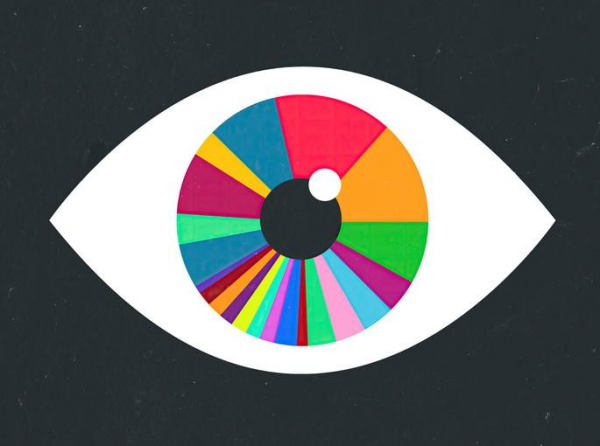
Color-changing eye drops: Are they safe?

As the adage goes, the eyes are the windows to the soul. So what does it mean to wish yours were a different color?
Apparently enough people share this desire to create a bustling market for color-changing eye drops, which are making the rounds through social media and online retailers.
Personalizing eye color might sound tempting, especially for younger people and those who enjoy experimenting with elements of fashion or style. But are over-the-counter, color-changing eye drops safe? The answer is a hard no, according to the American Academy of Ophthalmology (AAO), which recently issued a warning against “eye color-changing solutions.”
Why shouldn’t you try color-changing eye drops?
Color-changing eye drops aren’t approved by the FDA, haven’t been tested for safety or effectiveness, and could potentially damage people’s eyes, the AAO warns.
“It might seem benign when you see a product like this online,” says Dr. Michael Boland, an associate professor of ophthalmology and glaucoma specialist at Harvard-affiliated Mass Eye and Ear. “People think, ‘Why not try it?’.” “But there’s no way to know what’s in these bottles and no oversight over how they’re being made.”
How do the eye drops work?
That’s not clear. Companies manufacturing the drops claim the products adjust levels of melanin in the iris, the colored portion of the eyeball. Purportedly, the effects begin to be visible within hours and can last for a week or longer. If a user wants enduring results, they’ll need to continue using the product.
But these claims skirt a complete lack of evidence that the drops have any effects on the iris, much less the desired effects, Dr. Boland says.
“I’ve found zero descriptions of how they work in terms of a plausible mechanism,” he says. The ingredients list includes things that might be found in other eye drops or drugs or even cosmetics, but nothing that would actually change your eye color.”
How might the drops hurt your eyes?
The AAO lists a variety of potential safety risks from using these products or any other unregulated eye drops, including:
- inflammation
- infection
- light sensitivity
- increased eye pressure or glaucoma
- permanent vision loss.
“All of those problems are possible, since we don’t have any real idea what’s in these bottles,” Dr. Boland says. “The biggest concern is damage to the cornea, the clear part of the front of the eye. If the cornea is damaged by the chemicals in those bottles, you might lose vision.”
Are there safe alternatives to change eye color?
Still hankering for a way to get, say, Taylor Swift’s electric blue eyes or Julia Roberts’ golden brown peepers? There is a trustworthy option, Dr. Boland says: colored contact lenses. But he recommends choosing that option with caution.
“Professionally prescribed and dispensed contact lenses are a safe way to change your eye color,” he says. “But don’t buy them online. Get them from a reputable source to make sure they’ve been regulated and evaluated as safe, because contacts can damage the eye if they’re not designed properly or kept clean.”
About the Author

Maureen Salamon, Executive Editor, Harvard Women's Health Watch
Maureen Salamon is executive editor of Harvard Women’s Health Watch. She began her career as a newspaper reporter and later covered health and medicine for a wide variety of websites, magazines, and hospitals. Her work has … See Full Bio View all posts by Maureen Salamon
About the Reviewer
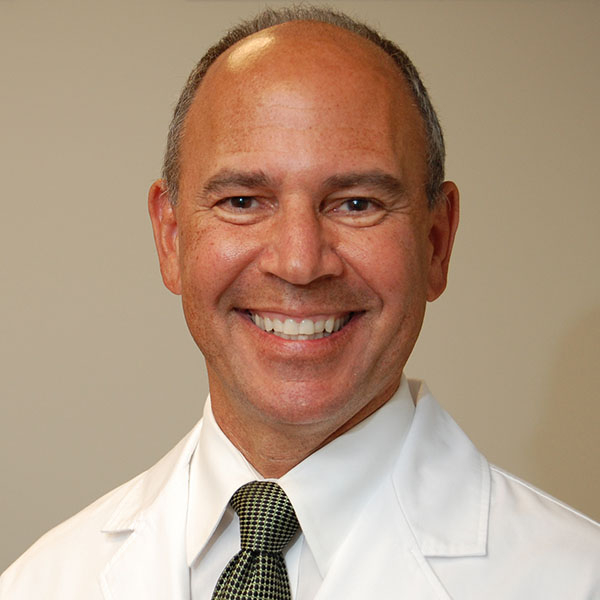
Howard E. LeWine, MD, Chief Medical Editor, Harvard Health Publishing; Editorial Advisory Board Member, Harvard Health Publishing
Dr. Howard LeWine is a practicing internist at Brigham and Women’s Hospital in Boston, Chief Medical Editor at Harvard Health Publishing, and editor in chief of Harvard Men’s Health Watch. See Full Bio View all posts by Howard E. LeWine, MD

Is the portfolio diet the best diet ever?

News flash: What we eat can play a pivotal role in warding off — or treating — disease and enhancing quality of life. You may already believe this, and certainly mounting evidence supports that idea. But on the cluttered shelf of diets claiming top health benefits, which one ranks as the absolute best?
That’s a trick question. In fact, there is no single best diet. A good diet for me may be different from what’s best for you. And for either of us, there may be several good choices with no clear winner.
How can you choose the right diet for you?
When thinking about what diet might be best for you, ask yourself:
- What goals are most important? A goal might be weight loss, improved health, avoiding disease, or something else.
- How do you define “best”? For some people, best means the diet with the highest number of health benefits. For others, it may focus on one specific health benefit, such as lowering cholesterol. Still other people may prefer a diet that delivers the greatest benefit for the lowest cost. Or a diet that is healthy and also easy to stick with.
- What health problems do you have? One diet may have an advantage over another depending on whether you have cancer, cardiovascular disease, diabetes, or none of these.
- Which foods do you like best? Your tastes, culture, and location may shape your dietary preferences, and powerfully affect how likely you are to stick with a specific diet.
Which diets are high in health benefits?
Two very well studied diets demonstrate clear benefit, including lowering risk for heart disease and stroke and reducing high blood pressure: the Mediterranean diet and the DASH diet.
But the portfolio diet may be as good as or better than these plans, at least for combatting cardiovascular disease that contributes to clogged blood vessels, heart attacks, and stroke. What? You’ve never heard of the portfolio diet? You’re not alone.
What is the portfolio diet?
Just as a financial advisor may recommend having a diverse investment portfolio — not just stocks, not just bonds — the portfolio diet follows suit. This largely plant-based diet focuses on diverse foods and food groups proven to lower harmful blood lipids, including LDL (so-called bad cholesterol) and triglycerides.
If you choose to follow this eating pattern, you simply need to learn which foods have a healthy effect on blood lipids and choose them in place of other foods. For some people, this only requires small tweaks to embrace certain foods while downplaying other choices. Or it may call for a bigger upheaval of longtime eating patterns.
Which foods are encouraged in the portfolio diet?
Below are the basics. Eating more of these foods regularly may help lower levels of harmful blood lipids:
- plant-based proteins such as soy, beans, tofu, peas, nuts, and seeds
- high-fiber foods such as oats, barley, berries, apples, and citrus fruit; other examples include bran, berries, okra, and eggplant
- phytosterols, which are a natural compound in plant-based foods such as whole grains, fruits, vegetables, and nuts (other sources are foods fortified with phytosterols or dietary supplements)
- plant-based oils high in monounsaturated fat such as olive oil, avocado oil, safflower oil, and peanut oil.
See? Some of your favorite foods make the cut. That’s a major strength of this approach: the list of recommended foods is long. So, it’s likely that you’re already eating and enjoying some of the recommended foods.
Which foods are not part of the portfolio diet?
It’s worth highlighting foods that are not on this list, such as
- red meat
- highly processed foods
- refined grains and added sugar, which may contribute to chronic inflammation
- butter, cream, and other dairy products high in saturated fat and cholesterol.
What can the portfolio diet do for you?
Researchers have shown that the portfolio diet can improve blood lipids. But can it also lower the risk of heart attack, stroke, and other cardiovascular problems?
Yes, according to a 2023 study published in Circulation. More than nearly 17,000 people kept careful food diaries for 30 years. Those who most closely followed the portfolio diet, compared with those who followed it the least, were more likely to have favorable lipids and inflammation. They were also 14% less likely to have a heart attack, and 14% less likely to have a stroke.
This was true even after accounting for factors that could affect cardiovascular disease risk, such as taking cholesterol-lowering medications, exercise, smoking, or having diabetes or a family history of cardiovascular disease.
Because this was an observational study, it can’t conclusively prove that the portfolio diet, rather than another factor, was responsible for the observed cardiovascular benefits. And we don’t know how much benefit came from reducing or eliminating certain types of foods, rather than from the specific foods eaten.
Does the portfolio diet help people lose weight or deliver other health advantages?
What about the portfolio diet for weight loss? Although some people lose weight on the portfolio diet, it’s not billed as a weight-loss diet. Understanding its potential benefit for other conditions such as obesity, cognitive decline, diabetes, and cancer awaits further research.
Go beyond diet to boost health
Of course, diet is not the only way to improve cardiovascular health and your overall health. You’ll stay healthier by
- not smoking
- getting regular exercise
- maintaining a healthy blood pressure and weight
- preventing diabetes when possible, or getting good medical care to treat it if necessary
- taking prescribed medications such as cholesterol-lowering drugs.
The bottom line
It’s probably best to move past the idea of there being a single best diet. The overall pattern of your diet and your portion sizes are probably more important. For most people, it’s also a good idea to move away from restrictive diets that are nearly impossible to stick with and toward healthier overall eating patterns. The portfolio diet checks both those boxes.
There’s a lot of overlap between the portfolio diet and other healthy diets. So, no one should be suggesting it’s the best diet ever. But if you’re trying to eat healthier, it’s a great place to start.
About the Author

Robert H. Shmerling, MD, Senior Faculty Editor, Harvard Health Publishing; Editorial Advisory Board Member, Harvard Health Publishing
Dr. Robert H. Shmerling is the former clinical chief of the division of rheumatology at Beth Israel Deaconess Medical Center (BIDMC), and is a current member of the corresponding faculty in medicine at Harvard Medical School. … See Full Bio View all posts by Robert H. Shmerling, MD

How to help your preschooler sleep alone

“Sleep is still most perfect… when it is shared with a beloved,” wrote D.H. Lawrence, and most young children would agree. But sometimes those beloved — that is, parents — would rather have some privacy and not be woken by a kicking child all night.
So what can you do?
Sleep-alone campaign step one: Understanding
Before you do anything, be sure you understand why your child wants to sleep with you. It’s most likely simply because they love you and feel most secure snuggled next to you, but before you work to change the habit, be sure that your child is ready for — and can handle — the change. If your child has been more clingy or irritable than usual, or is having difficult behaviors in any way, touch base with your doctor.
Sleep-alone campaign step two: Changing habits
Changing where your child sleeps is changing a habit. When it comes to changing habits, it helps to be practical and — this is really important — consistent. Here are some tips:
- Make an appealing sleep space for your child. Not that anything can really take the place of you, but it is certainly easier to get them to stay in their own room or space if they like it there. Work with them to set up and decorate in a way they like.
- As you create the space, keep in mind what keeps your child awake. If it’s light, use room-darkening curtains. If it’s darkness, think night lights and flashlights. If it’s noise, think about getting a white-noise machine. Set your child up for success. Please: no TVs or devices in the bedroom. They get in the way of healthy sleep.
- Have a consistent bedtime. Try not to let your child stay up late — or sleep late — on weekends. This way your child is more likely to be tired when you want them to be tired.
- Have a consistent, calming, and nurturing bedtime routine. Try to lower the energy level, perhaps with a bath and then some snuggling and reading stories. You want to help them wind down, and also be sure they end the day feeling loved.
- If your child has a hard time going to bed alone, it’s okay to sit in the room and ease yourself out bit by bit after lights are out (you can literally move closer and closer to the door). Try to gradually shorten the time you are in the room.
- If your child gets out of bed, bring them back to their bed. This is the hard part: your child won’t like it, and it can be exhausting for you if they keep creeping out of their bed and into yours. But if you give in and let them stay in your room, they will stay in your room. Every night.
- Use incentives. Make sure your child gets major kudos for any progress at all — and maybe earns something extra for staying in their own bed all night. Try to steer away from things, if possible, and think more about quality time (an extra story, a fun outing).
If nothing is working, or your child is really upset, talk to your doctor. There may be more going on, and the two of you can work together to figure things out and help your child. Both of you deserve a restful night’s sleep.
Follow me on Twitter @drClaire
About the Author

Claire McCarthy, MD, Senior Faculty Editor, Harvard Health Publishing
Claire McCarthy, MD, is a primary care pediatrician at Boston Children’s Hospital, and an assistant professor of pediatrics at Harvard Medical School. In addition to being a senior faculty editor for Harvard Health Publishing, Dr. McCarthy … See Full Bio View all posts by Claire McCarthy, MD

Do parasocial relationships fill a loneliness gap?

Do you follow certain social media creators, music artists, actors, athletes, or other famous people? Are you a huge fan of particular fictional characters from a book, TV show, or movie? Perhaps you check in with them daily because you feel a connection, care about them, or just love keeping up with the minutiae of their lives.
These one-sided emotional ties to people you don't actually know (or those who don't actually exist) are called parasocial relationships. Like all relationships, they come with risks and benefits, says Arthur C. Brooks, a social scientist, best-selling author, and professor at both the Harvard Kennedy School and the Harvard Business School.
Why do we develop parasocial relationships?
Parasocial relationships tend to occur because of our natural tendency to link to others.
"Humans have evolved to thrive in groups, probably because 250,000 years ago you needed to rely on other people to survive by building social relationships. And so we become attracted to and care about people if we have a regular enough exposure to them," says Brooks.
We are all exposed regularly to tiny details about celebrities and fictional characters, watching their days unfold on social media or learning about them from a TV show or book. What hooks us is the emotional connection, especially if the person is exciting or compelling.
"That's the secret to the success of the Harry Potter book series and the TV show Breaking Bad. The writing is supposed to engage you emotionally," Brooks says. "People can form a bond even if the characters are psychopaths."
The upsides of parasocial relationships
Parasocial relationships can be a nice complement to your life. They might entertain you, inspire you, educate you, or bring you comfort. You might feel less lonely or like you're part of a tight group or a cultural moment, a feeling the shows Friends and Game of Thrones fostered for many people.
Bonding emotionally with famous or fictional people might also shape people's values. For example, children might learn lessons about right and wrong from characters they connect with on shows such as Sesame Street or Bluey. Teens or adults might feel moved to work harder if they're attached to champion athletes, or do good deeds if they admire selfless leaders.
One study of more than 300 people ages 18 to 35 even found that parasocial relationships might help reduce the stigma of mental health conditions. All participants watched one video of someone who shared personal information aimed at creating a social bond. Then, some participants also watched a video of the content creator sharing his challenges with bipolar disorder. Those who saw both videos scored lower on measures of prejudice about mental health conditions than those who only saw the first video.
The downsides of parasocial relationships
While parasocial relationships can enrich your life, these one-sided affairs can also hurt you.
- They won't love you back. "They're like fake food. They taste good, but they have no nutritional content and won't meet your needs. You need to love and be loved in return to thrive," Brooks says.
- They might contribute to loneliness and isolation if you rely on them too much. Loneliness and isolation are linked to increased risks of many chronic health problems such as depression, anxiety, dementia, and heart disease, and even premature death.
- They might have a negative influence on you. Are you picking up unhealthy ideas from the people you follow? Brooks says this should be a special concern for parents whose kids have parasocial relationships: The messages kids glean might be at odds with your values — perhaps because they are controversial political or adult themes.
Navigating parasocial relationships
A dollop of parasocial relationships in your life is fine as long as they don't crowd out real-life bonds or warp your thinking and values. But how would you know if this was becoming an issue?
Two red alerts:
- Ask yourself if you're too attached. For example, are you skipping dinner with friends because you prefer watching a TV show with a character you care about and want to connect with?
- Be wary. "If someone is trying to brainwash you, saying, 'I'm your friend, you can trust me,' that person is using a personal social bond to get you to do something — like vote a certain way," Brooks says. He points out that social media stars try to establish parasocial relationships with followers to get more clicks and make money. "That's what the new economy is all about — monetizing parasocial relationships on a mass scale," Brooks says.
Shifting from parasocial relationship to deeper connections
Parasocial relationships fill a need. Social scrolling, streaming shows, or following celebs may tamp down loneliness or offer curated moments of joy and connection. But if you're leaning too hard on these one-sided relationships, Brooks advises taking a hard look at what's missing from your life.
Forging warm connections in real life is worthwhile, though it isn't always easy. "It's a tall order for people who are shut-ins or introverted or don't have social skills, but you can start small. Have dinner with a friend. Spend more time with your family. Get more human eye contact. Touch, such as a hug, releases the bonding hormone oxytocin in the brain," Brooks suggests. "You'll care less about the characters and get what you really need."
About the Author

Heidi Godman, Executive Editor, Harvard Health Letter
Heidi Godman is the executive editor of the Harvard Health Letter. Before coming to the Health Letter, she was an award-winning television news anchor and medical reporter for 25 years. Heidi was named a journalism fellow … See Full Bio View all posts by Heidi Godman
About the Reviewer
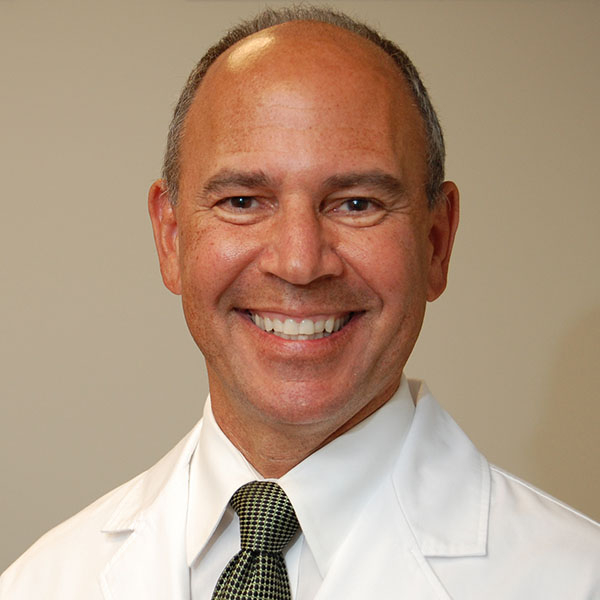
Howard E. LeWine, MD, Chief Medical Editor, Harvard Health Publishing; Editorial Advisory Board Member, Harvard Health Publishing
Dr. Howard LeWine is a practicing internist at Brigham and Women’s Hospital in Boston, Chief Medical Editor at Harvard Health Publishing, and editor in chief of Harvard Men’s Health Watch. See Full Bio View all posts by Howard E. LeWine, MD
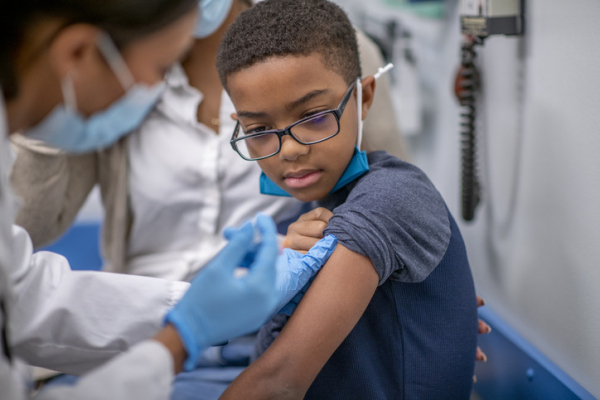
Why follow a vaccine schedule for children?

By the first week in September this year, US health officials had already tallied 247 cases of measles, a highly contagious illness. For perspective, in 2023, 59 measles cases were reported during the full year.
This isn’t surprising, as vaccination rates for preventable childhood illnesses have decreased, according to the Centers for Disease Control and Prevention (CDC). Between the 2019–2020 school year and the 2022–2023 school year, the percentage of fully immunized kindergarteners dropped from 95% to 93%.
Even a small decline like this affects herd immunity that helps protect our communities. (Herd immunity occurs when there are enough immunized people to make spread of an illness among unimmunized people less likely.) For measles, we need 95% of people — children and adults — to be immunized to achieve herd immunity.
How do vaccines help children?
The vaccines given before kindergarten protect children against serious illnesses and possible hospitalizations or even deaths:
- diphtheria, a serious respiratory illness
- hepatitis B and hepatitis A, both infections of the liver. Hepatitis B infections can be chronic and lead to liver damage.
- pneumococcus and Haemophilus Influenzae, bacteria that can cause serious infections
- measles, which can cause pneumonia and neurological problems
- mumps, which causes swollen glands in the neck and can sometimes lead to complications
- pertussis (whooping cough), which can be fatal in infants
- polio, which can cause a paralysis that can be fatal
- rotavirus, a diarrhea that can lead to serious dehydration in young infants
- rubella, or German measles. If women catch it during pregnancy, it can lead to miscarriage or birth defects.
- varicella (chickenpox). While most infections are mild, the rash caused by chickenpox can get infected, and the virus itself can affect the lungs or brain.
What to know about vaccine exemptions and schedule changes
The most concerning part of the CDC report is that it’s not just that families got behind in their doctor visits, it’s that more are choosing not to vaccinate. Vaccine exemptions rose from 0.4% to 3% in the 2022–2023 school year. That 3% is an average; 10 states have exemption rates over 5% (Idaho’s exemption rate was 12.1%).
Some parents have children vaccinated, but alter the schedule. In a 2020 study, researchers found that only 63% of families followed the recommended vaccination schedule for their children. Among those who didn’t, the majority followed an alternate schedule, spacing vaccines out, skipping some, or doing a combination of both.
But vaccines are given on a schedule for a reason: to protect children from vaccine-preventable disease. Experts designed the schedule so that children get protection when they need it — and the doses are timed so the vaccine itself can have the best effect. When parents don’t follow the schedule, their children may not be protected.
Worried about getting several vaccines at once?
Parents sometimes worry about giving several vaccines at once, something that the schedule calls for, especially at the 2-, 4-, and 6-month visits. Not only is it safe, but when parents spread out the schedule it takes longer before the child is protected, leaving babies vulnerable to these diseases. It also means more visits to the doctor: the study found that babies whose parents used an alternate schedule had three more vaccination visits than babies whose parents followed the recommended schedule.
Worried about side effects?
Parents also worry about side effects of vaccines and other risks, often fueled by information they get on social media. Not every person who gets these infections has a serious case or complications. But the risk of a complication of the disease is always higher than the risk of the vaccine, an important fact that sometimes gets lost in the vaccine discussion.
When children get behind on vaccines, they are more likely to catch vaccine-preventable illnesses — which is not only dangerous for them, but also for those around them who aren’t vaccinated, as we have seen in measles outbreaks. It is not just children whose parents choose not to vaccinate them that are at risk, but also children who can’t be vaccinated, such as newborns or those who are taking medications that suppress the immune system. Adults with suppressed immune systems can be at risk too. Parents often forget that the decisions they make about immunization affect more people than just their child.
How can you learn more about vaccines?
It’s normal for parents to have questions and worry about medical treatments given to their children. After all, it’s a parent’s job to worry. But as parents question and worry, it’s really important that they get reliable medical information from expert sources. The Centers for Disease Control and Prevention, as well as Immunize.org and the American Academy of Pediatrics, have lots of accurate and useful information, and parents should always talk to their child’s doctor if they have concerns.
The bottom line for parents
Think long and hard, and get information from reliable sources, before you change your child’s vaccine schedule. The schedule is there to protect your child — and everyone around your child.
About the Author

Claire McCarthy, MD, Senior Faculty Editor, Harvard Health Publishing
Claire McCarthy, MD, is a primary care pediatrician at Boston Children’s Hospital, and an assistant professor of pediatrics at Harvard Medical School. In addition to being a senior faculty editor for Harvard Health Publishing, Dr. McCarthy … See Full Bio View all posts by Claire McCarthy, MD